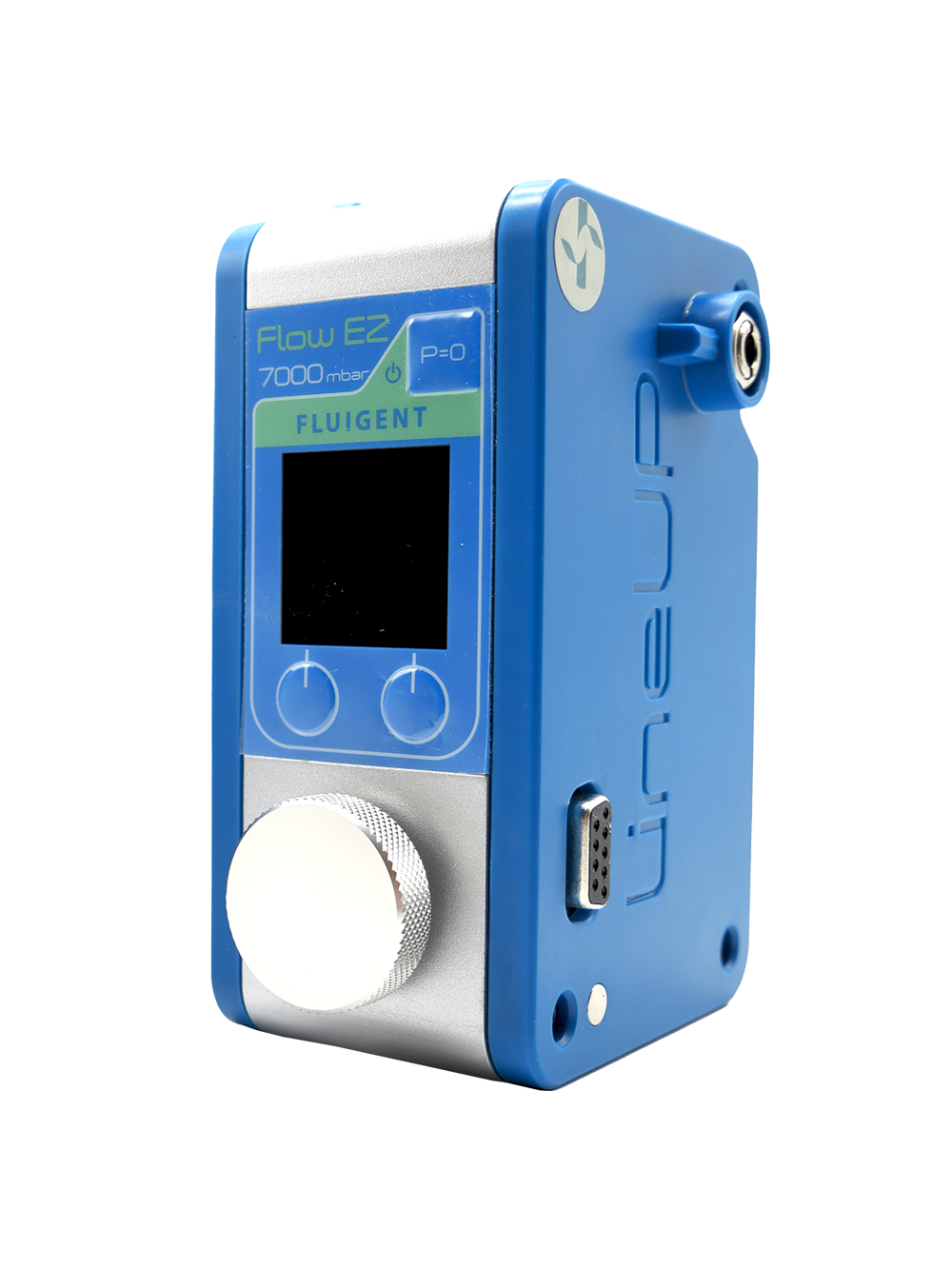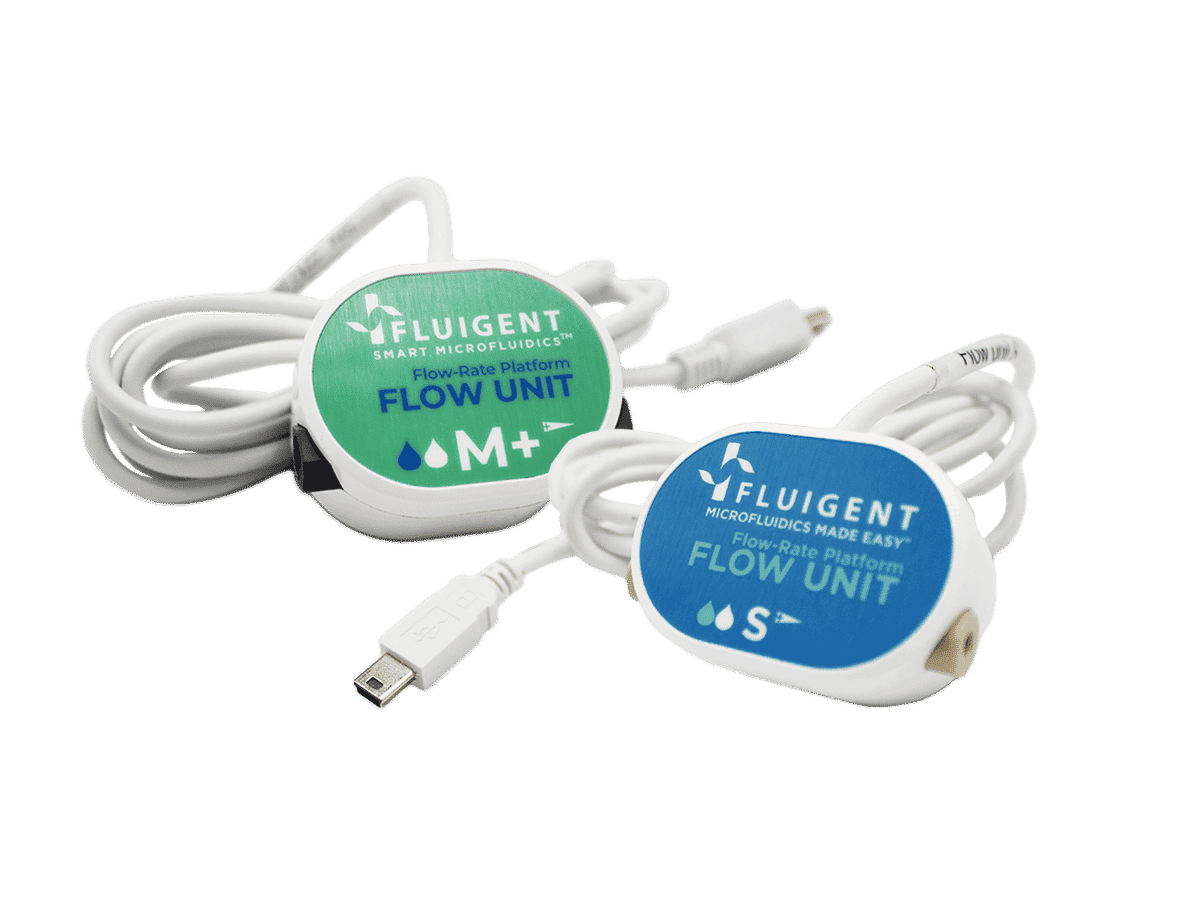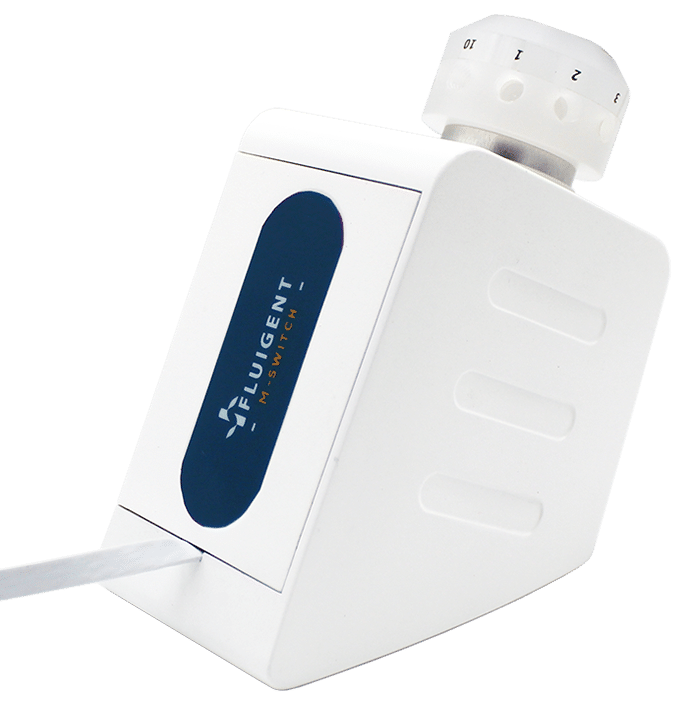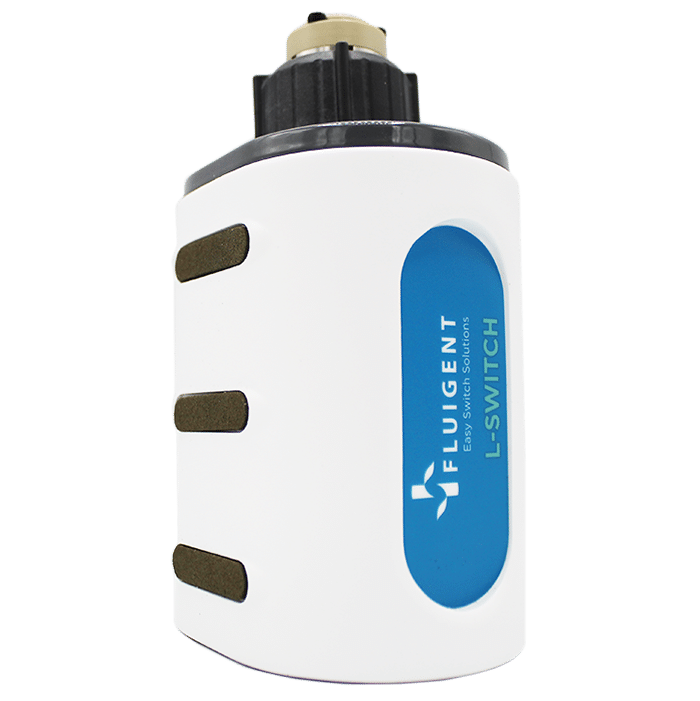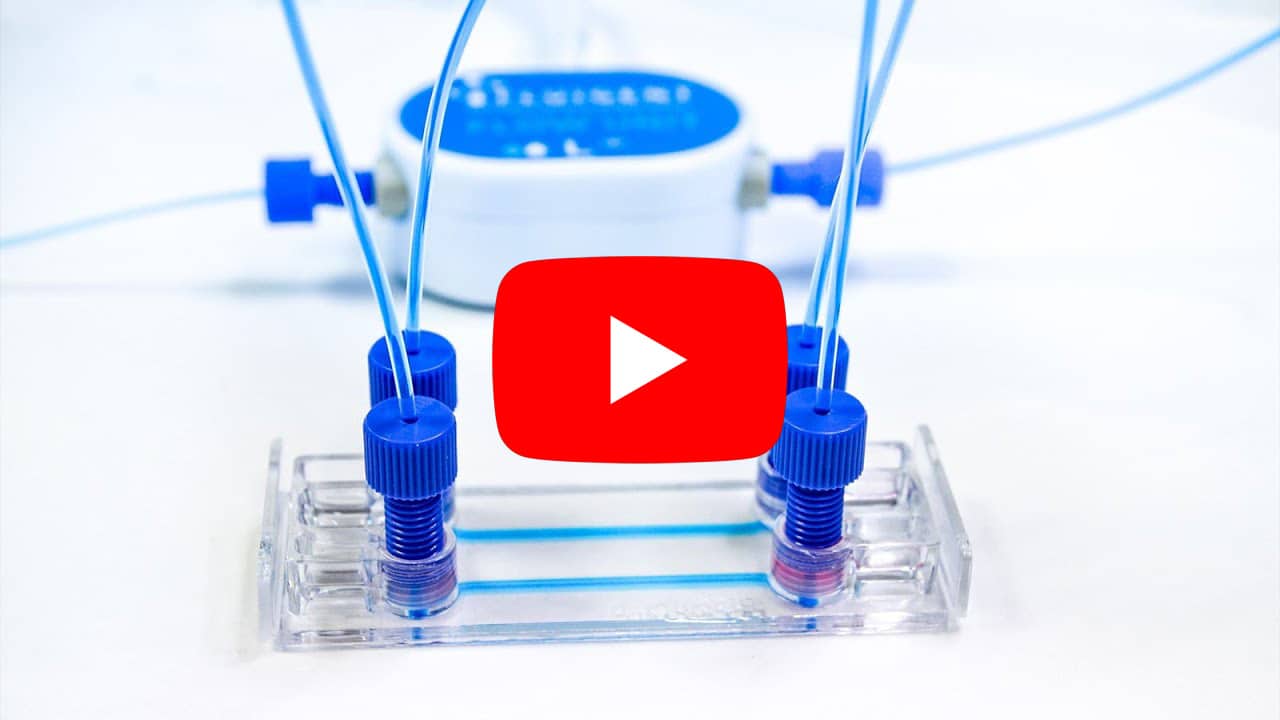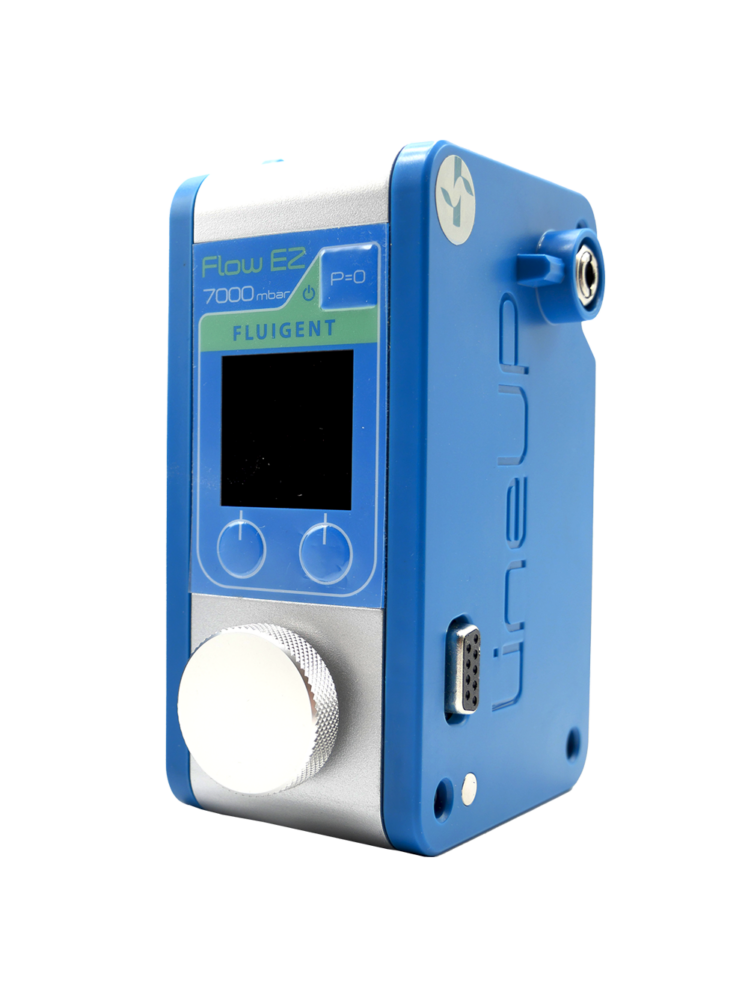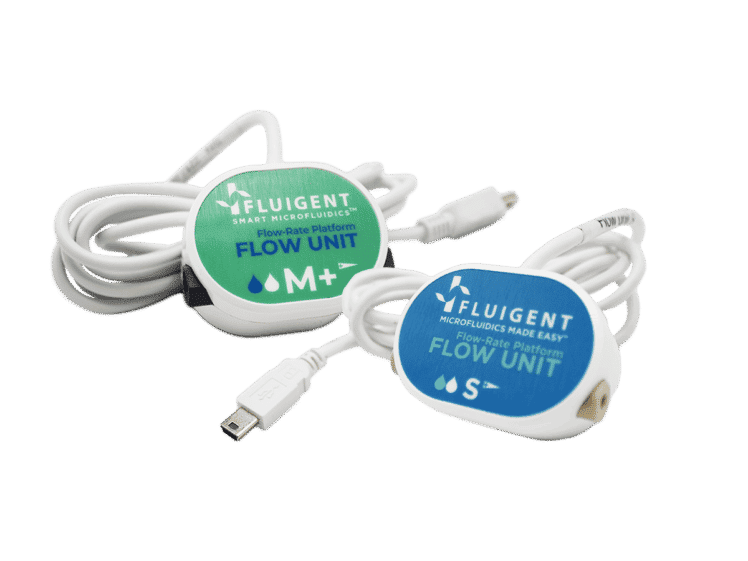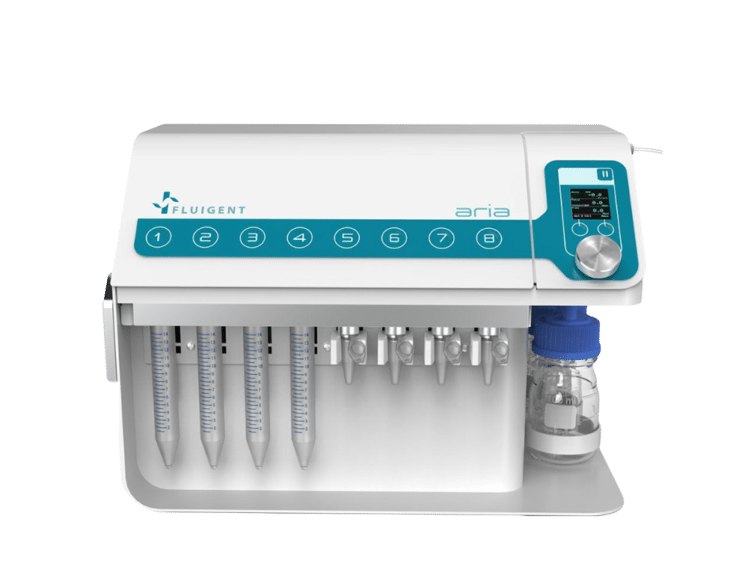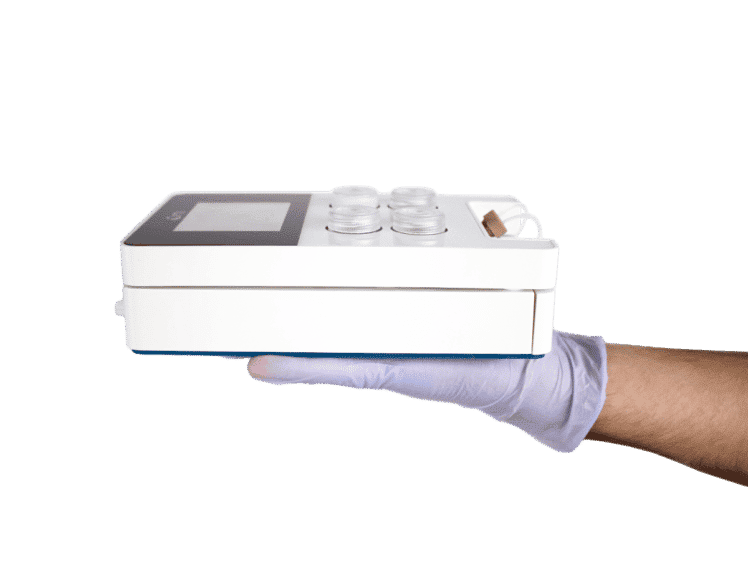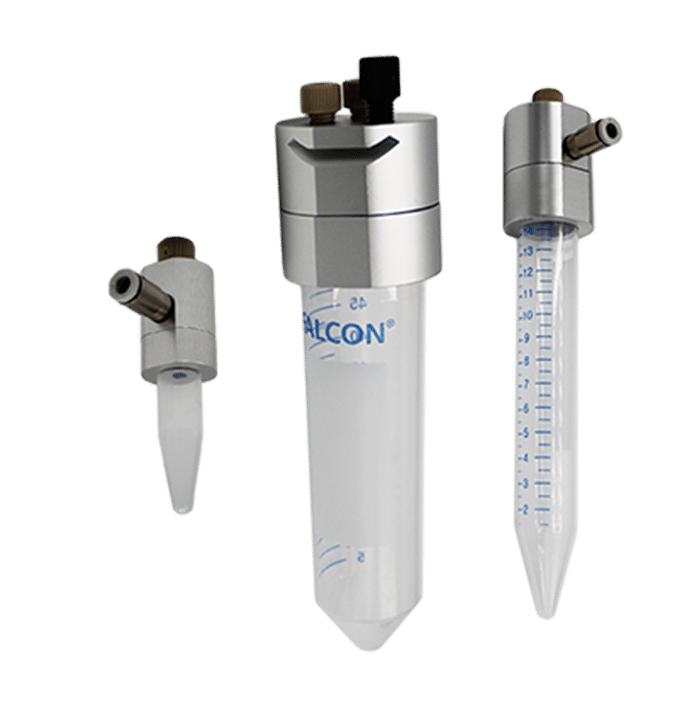Simple fitting & connections
Easy-to-Use Cell Culture Chip
OOC-FLOW-01Be-Flow perfused cell culture chip
Be-Flow Standard is Beonchip’s user-friendly cell culture perfusion chip designed for long-term 2D and 3D cell cultures under the flow in two independent channels. The device is fully compatible with any Fluigent’s system and can also compatible with a simple rocker, thanks to integrated fluid reservoirs at the inlets and outlets. Its robust yet accessible design makes it suited for vascular research, where shear stress plays a major role in regulating gene expression.
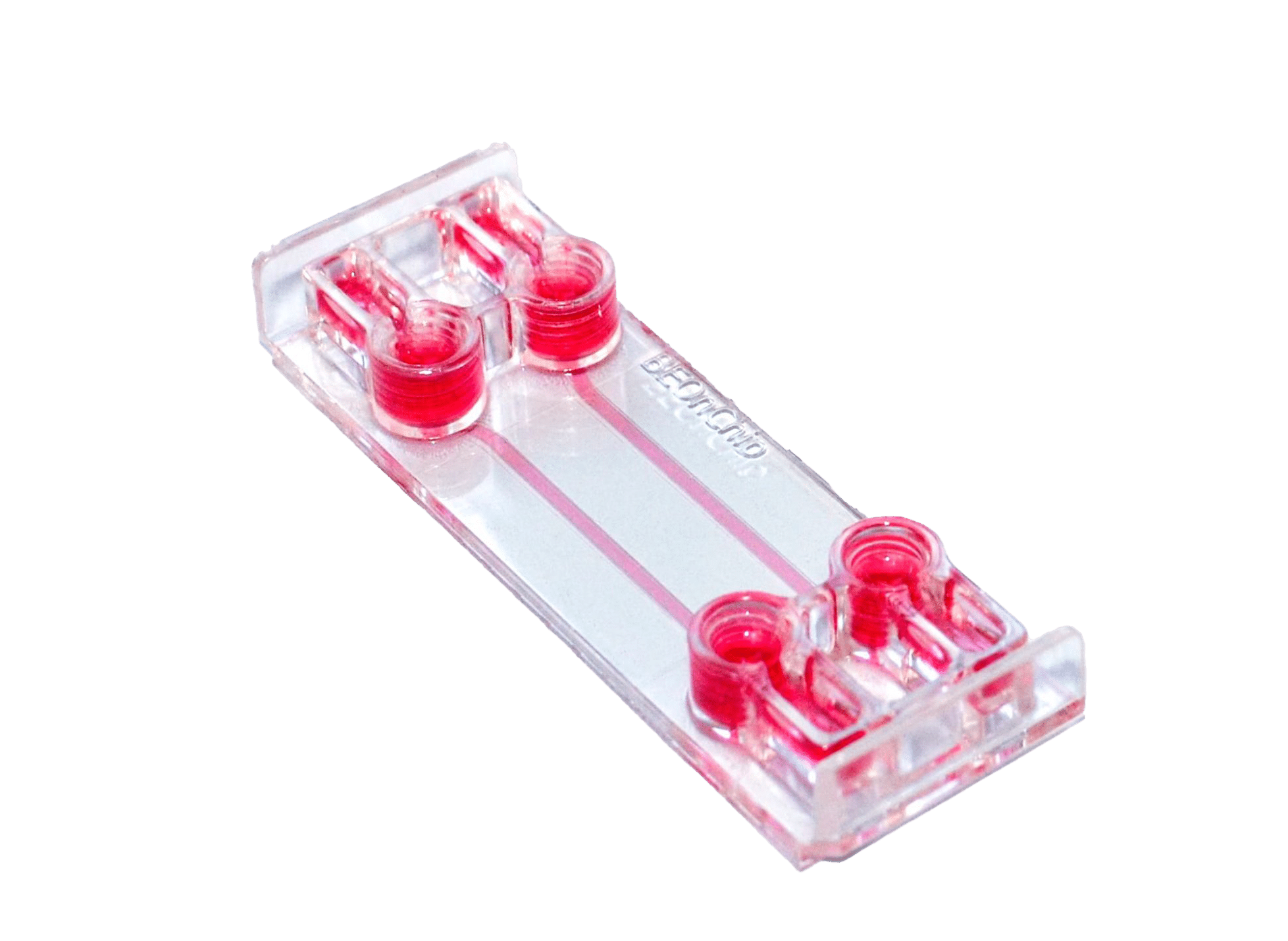
- Easy to use
- Biomimetic environment
2D or 3D culture
- Sterile
Dedicated to cell biology
Features of the microfluidic cell culture chip
High optical clarity
The Be-Flow perfused cell culture chip is compatible with all kinds of optical microscopy and has the dimensions of a microscope slide, making it easy to handle under a microscope.
Easy to connect
Be-Flow is compatible with all Fluigent pressure-based flow controllers and can easily be coupled to flow sensors and valves.
No unspecific absorption
In contrast to PDMS devices, there is no non-specific absorption of chemical agents with Be-Flow, allowing for precise control of chemicals inside the chip. In fact, the chip is made of lipophobic thermoplastic materials.
Cell recovery
The cell cultures used in the Be-Flow can be easily recovered for further experimentation.
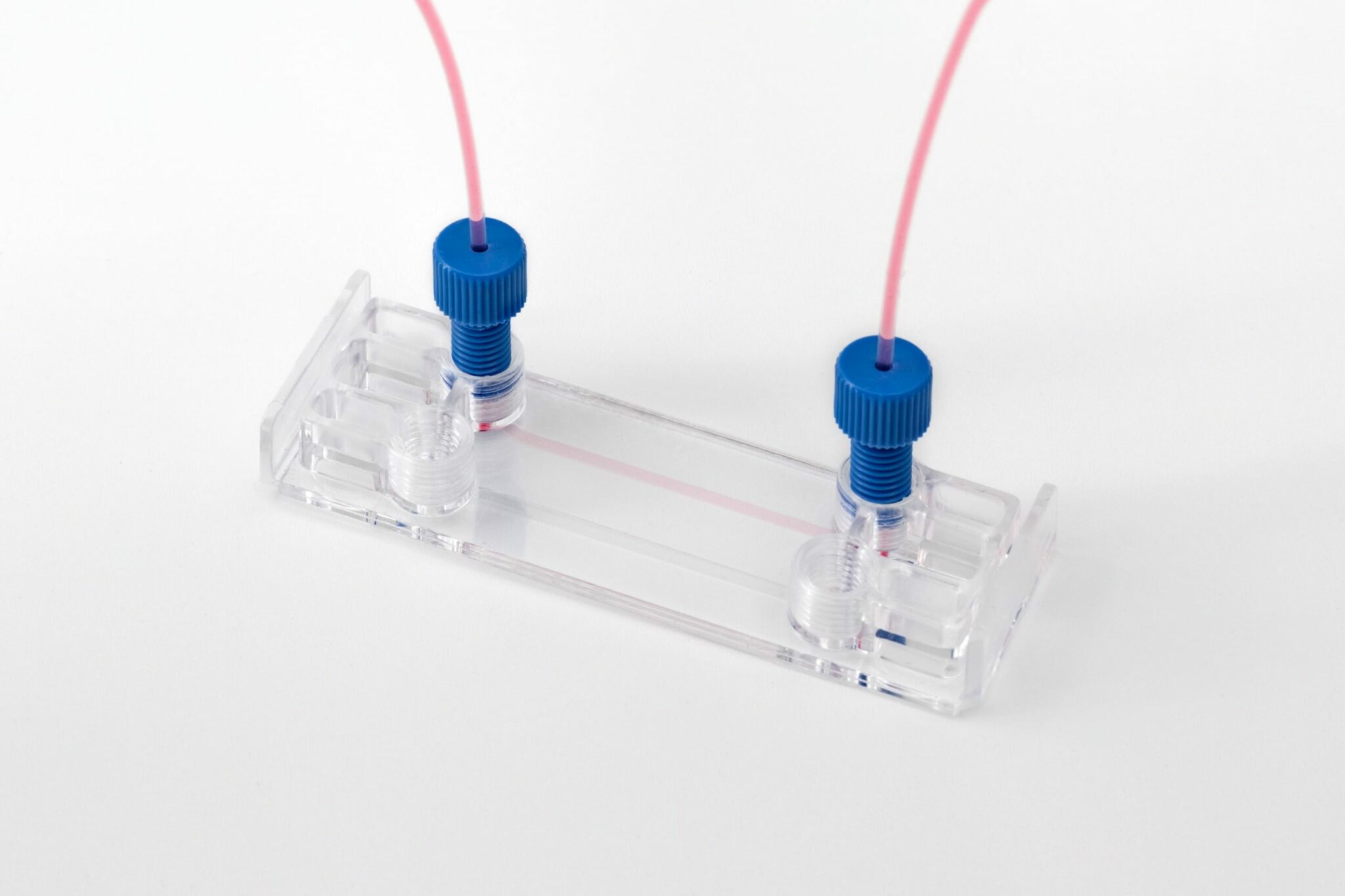
What cell culture models are possible?
Perform 2D culture experiments under flow, controlling mechanical shear stress on the cells in two independent channels.


The Be-Flow perfused cell culture chip allows 2D culture on all walls of the device: top, bottom, etc. (see technical note). Co-culture with monolayers of two different cell types is also possible.
Investigate the effect of circulating particles such as circulating tumor cells, immune system cells, bacteria, fungi, viruses, and many more in a 2D culture.
What applications are possible with this microfluidic cell culture device?
Be-Flow is the ideal device for research on the effect of flow and mechanical stress on a cell culture. Some of the most common applications include mechanical shear stress studies, interstitial flow on 3D cultures, rolling and adhesion, or circulating particle experiments.
Vascular research: Because the Be-flow microfluidic cell culture chip was designed for vascular research, some of the most common applications of the Be-Flow device are related to this field of knowledge. Endothelial vascular cells like HUVEC or HAEC are influenced by various forces in the human body due to blood flow. Using the Be-Flow, it is possible to precisely control shear stress and transmural pressure at the same time. These forces play an important role in the gene expression of HUVEC cells and their proper development. In addition, these forces can be modified to a disease level to study phenomena such as thrombosis, atherosclerosis or rolling adhesion of circulating particles in the endothelial tissues.

Specifications
Expertise & resources
-
Microfluidic Application Notes Controlling Flow Rate and Shear Stress with Omi™ to Study Endothelial Cell Response Read more
-
Microfluidic Application Notes Long-term fluid recirculation system for Organ-on-a-Chip applications Read more
-
Microfluidic Application Notes Peristaltic Pump vs Pressure-Based Microfluidic Flow Control for Organ on Chip applications Read more
-
Fluigent Products Datasheets BE-flow datasheet Download
-
Expert Reviews: Basics of Microfluidics Passive and active mechanical stimulation in microfluidic systems Read more
-
Expert Reviews: Basics of Microfluidics Mimicking in-vivo environments: biochemical and biomechanical stimulation Read more
-
Expert Reviews: Basics of Microfluidics Application of microfluidic chip technology Read more
Related products
Microfluidic flow controller
Flow EZ™
See the offerBidirectional Microfluidic Flow Sensor
FLOW UNIT | FLOW UNIT +
See the offerAria, An Automated Perfusion System
Platform for Spatial Omics
See the offerOmi, an Automated Organ-On-A-Chip Platform
Mimic Microphysiological Conditions in Organ-on-a-Chip Studies with this automated and fully integrated system (Shear stress, flow rate, and pressure control).
See the offer
